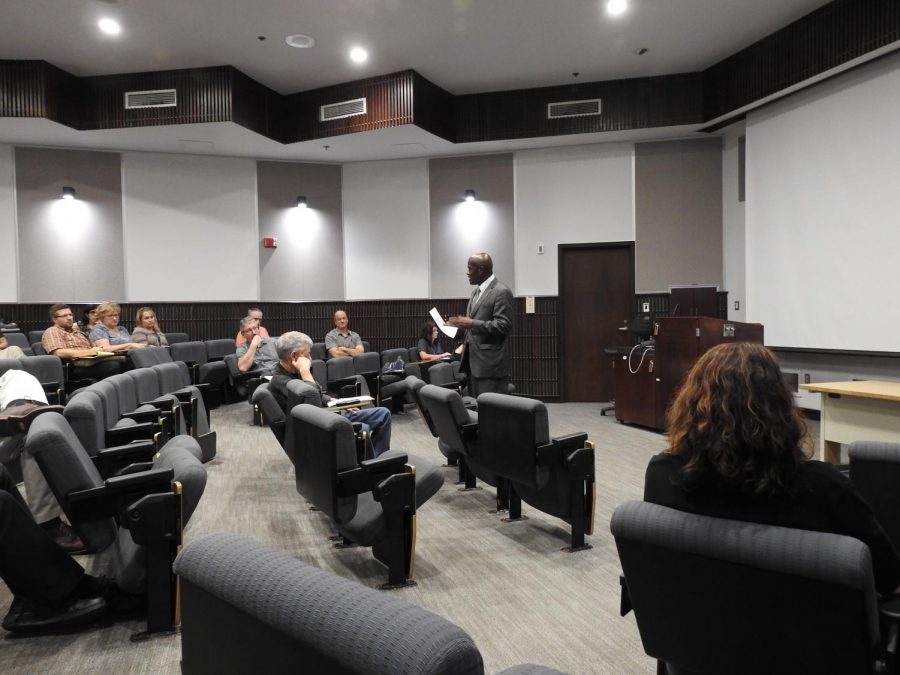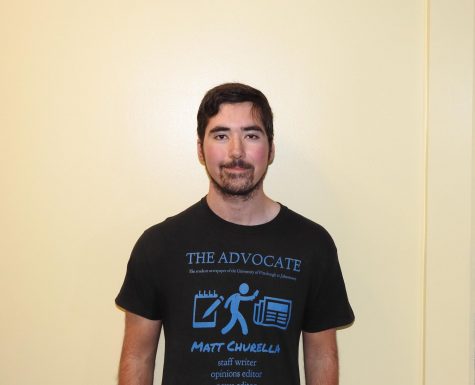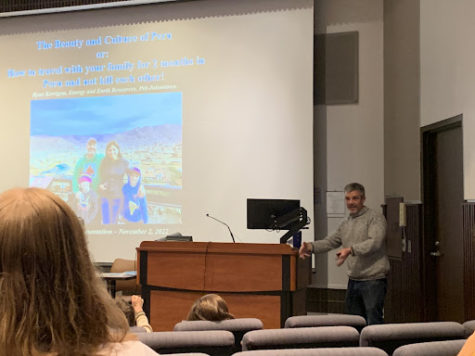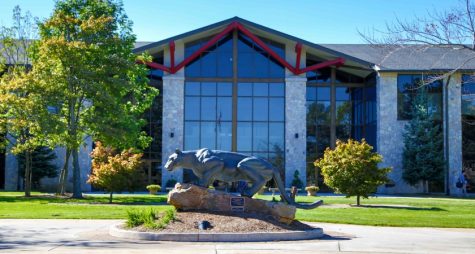Moves to boost enrollment planned
Pitt-Johnstown President Jem Spectar addresses Faculty Senate members Sept. 19.
October 2, 2018
With enrollment numbers down about nine percent from previous years, Pitt-Johnstown will take measures to ensure that next year’s enrollment has about 850 freshmen, according to President Jem Spectar.
According to Spectar, this year’s enrollment consists of about 750 freshmen.
He said last year’s enrollment consisted of about 825 freshmen, which, at the time, was a significant increase compared to prior years.
“The campus visit is key. This year, we are setting high targets to increase the number of campus visits,” Spectar said at a Sept. 19 Faculty Senate meeting.
The targets, according to Spectar, includes offering more scholarships and financial aid to prospective students, updating the campus’ website over the next year and a half while also increasing the campus’ marketing budget after it had been cut last year to fund a new Chemical Engineering building.
The targets also include what Spectar called elementary things, such as feeding families quality food and having faculty engage more with students during admitted student days.
Spectar said the amount of need-based aid made available to prospective students is nowhere close to what nearby colleges could offer them.
Spectar said the campus mostly offers merit-based scholarships as opposed to need-based scholarships and added that both types of aid could impact enrollment numbers.
“It’s a difficult calculus. If you give more merit-based aid, it helps you attract quality students. If you switch more to need-based aid, that too has implications,” he said.
“I think that we’re well positioned as we get into this year to make some progress.”
The campus website is expected to be upgraded over the next year and a half to make it more user-friendly to prospective students when they’re searching for information.
“We’re going to improve our website because, over the summer, we sort of simulated being a prospective student looking for information, and I can tell you that I was not pleased.
“We had trouble finding stuff, (and) we just discovered that our own website itself was not user-friendly to a prospective student and information was out of date.
“Needless to say, I directed some short-term fixes,” Spectar said, adding that a broader fix is underway.
“We’re going to trigger the process this year. It’s going to take about a year and a half just because you have to put a project out to bid and so on and so forth.”
Spectar said he is also concerned with the amount of finances invested into the campus’ marketing budget to attract new students.
“At my direction, we had sharply reduced the marketing budget,” he said, adding that the campus heavily invested in social media in previous years. “Well, that turned out to be a big mistake.”
Spectar said part of the reason why he thinks enrollment numbers are down is because campus administrators raised the required scores on standardized tests, such as the SAT, to be accepted into Pitt-Johnstown or to receive financial aid.
He said, engineering students need an average score of about 1200 before they can get aid.
Since about 50 engineering students were turned down by admissions staff because of low standardized test scores, Spectar said the program’s selectivity is positive because the stronger recruitment betters a student’s chances of being retained.
What’s not so positive for the campus, however, is that Spectar admitted to a significant shortfall for freshmen enrolled in the Natural Sciences division.
He also said the Education division dropped in freshmen numbers as well, from having 77 students last year to about 45 this year.
Spectar said he would like to expand prospective state enrollment past the campus’ traditional areas—mostly in Cambria and Somerset Counties—so that more prospective students can be reached near Lancaster and Philadelphia and put a stop to the shortfall in freshmen enrollment.
“If you look in the top 10 or top 5 high schools represented in our student population, you’ll find that, most of them are continuous to us. As you go further out, you don’t see that much representation,” Spectar said.
“That’s not a satisfactory place to be because there’s not enough people in the immediate area to recruit from.”










